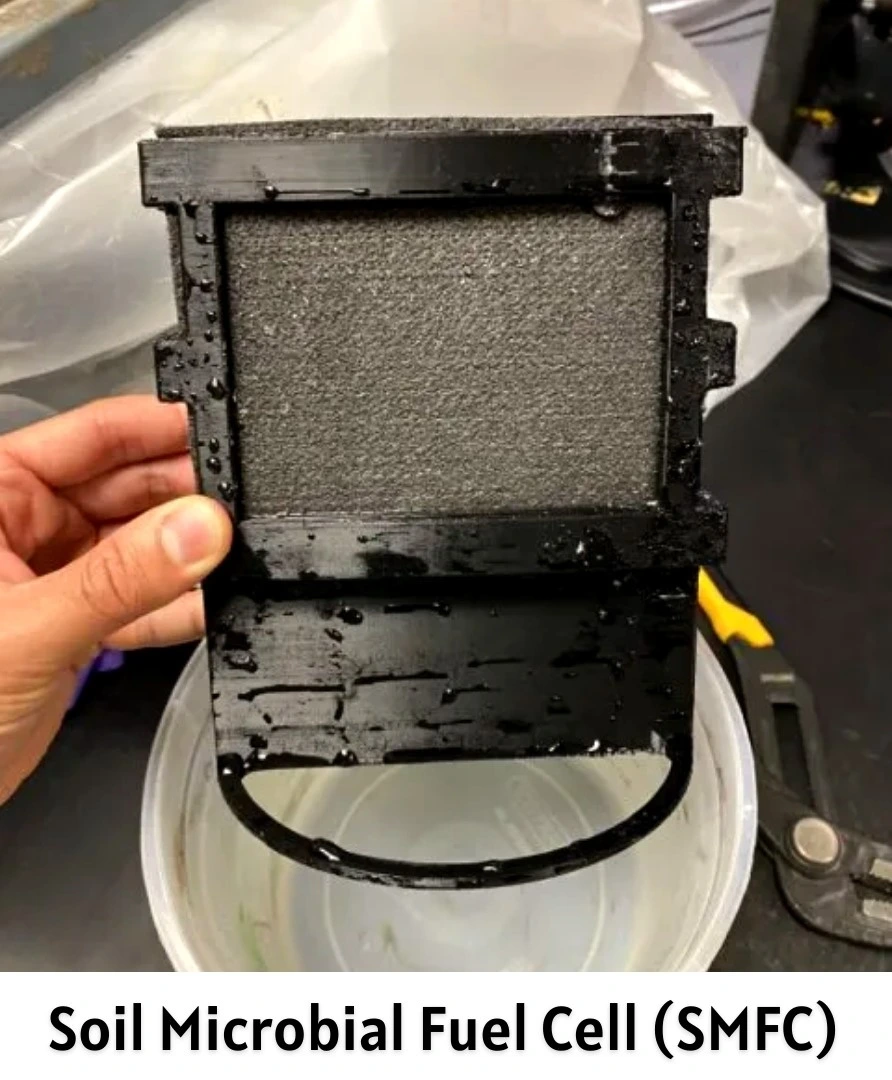Context:
A team led by Northwestern University in Illinois has developed a new fuel cell they claim can harvest energy from microbes living in the soil to power sensors, communications.
About Soil Microbial Fuel Cell (SMFC)
- About: The soil microbial fuel cell (SMFC) is a potential technology for bioelectricity generation.
- An soil microbial fuel cell can convert chemical energy from organic compounds to electrical energy by utilizing exo-electrogenic bacteria existing in the soil.

Soil Microbial Fuel Cell (SMFC)
- Origin: They were first created in 1911 and have a similar mechanism as a normal battery.
- Design: They have an anode, a cathode and electrolyte. But instead of using chemicals to generate electricity, they harvest electricity from bacteria that naturally give out electrons. These electrons then create an electric circuit.
- Mechanism: This fuel cell generates power with the help of microbes in the soil.
- Uses: It can potentially be used to fuel underground sensors used in green infrastructure and precision agriculture.
- Benefits:
- Eco Friendly: Since these are not built of lithium, heavy metals and toxins that are dangerous to the environment, they will be environment friendly.
- Efficiency: Not only did the fuel cell work in both wet and dry conditions, but its power also outlasted similar technologies by 120%.
- Longevity: As long as there is organic carbon in the soil for the microbes to break down, the fuel cell can potentially last forever.
- Challenge: These cells need to stay hydrated and oxygenated to operate without disruption, which is quite difficult in dry dirt.
Also Read: Battery Energy Storage Systems
News Source: Indian Express
![]() 20 Jan 2024
20 Jan 2024
